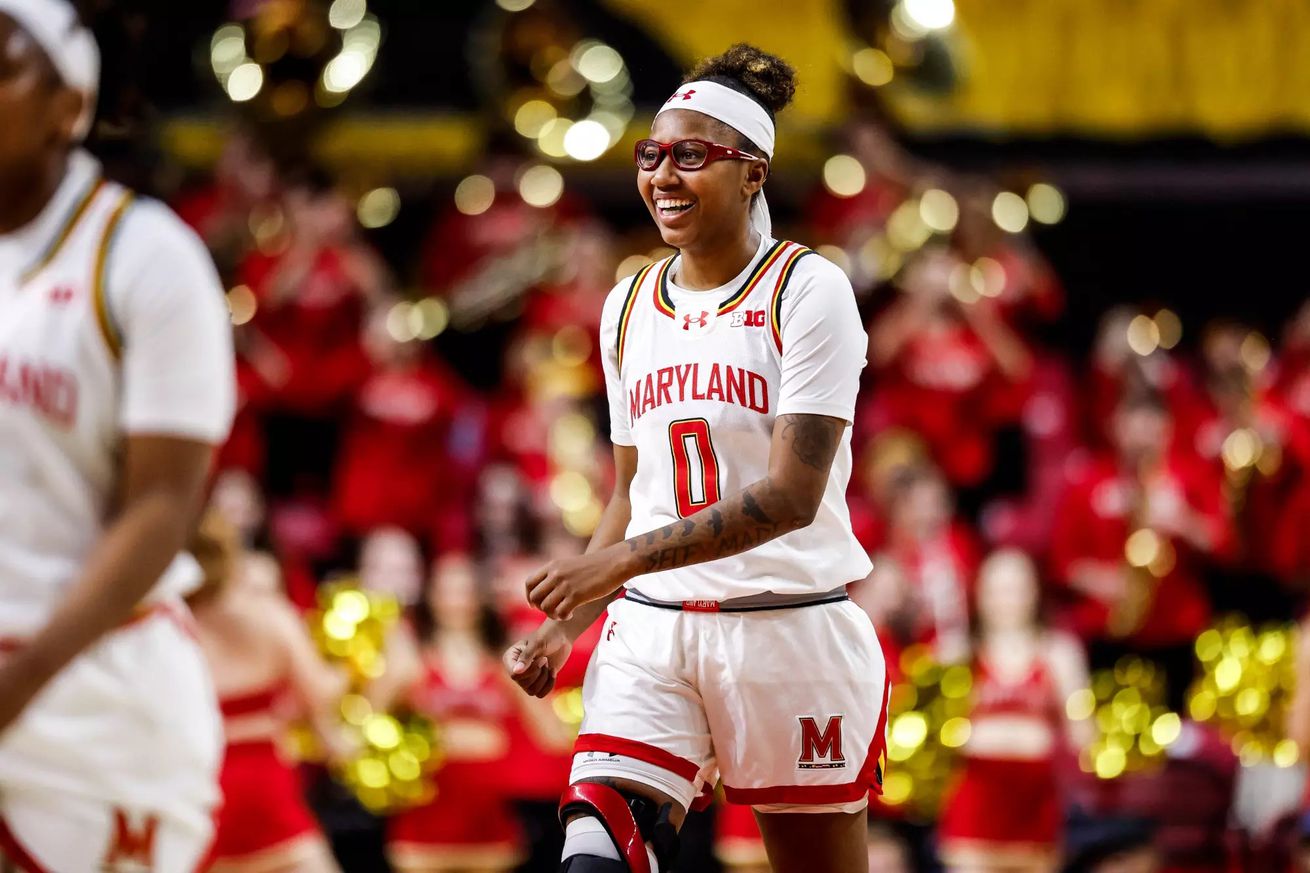
The Terps begin their west coast trip against the Ducks.
Maryland women’s basketball season has hit a rocky stretch. The Terps have lost four of their last five games and are coming off a devastating one-point loss to Illinois on their senior day.
As head coach Brenda Frese has consistently reminded her team and the public, though, their tough Big Ten schedule remains. The Terps now to Eugene, Oregon, to take on the Ducks for their first road taste of the new Big Ten.
The game will tip off at 9 p.m. EST and broadcast on Fox Sports 1.
Oregon Ducks (16-6, 7-4 Big Ten)
The Ducks have been a formidable group in their first year of Big Ten hoops, with the same conference record as the Terps.
They are fresh off a tumultuous week in the Great Lakes, in which they took down then-No. 16 Michigan State before getting blown out by a middling Michigan team.
Kelly Graves is in his 11th season as Oregon’s head coach and has become a fixture, highlighted by a Final Four run with legendary guard Sabrina Ionescu.
Players to watch
Deja Kelly, graduate guard, 5-foot-8, No. 25 — Kelly is a do-it-all player for the Ducks on and off the court. She averages over 10 points a game to go along with 4.5 rebounds, 3.5 assists and 1.4 steals. Kelly hasn’t been the most efficient — particularly form deep, where she is shooting just over 15% — but is an integral piece of Oregon’s team. Off the court, she is a student broadcaster at men’s games, occasionally playing and broadcasting on the same day.
Peyton Scott, graduate guard, 5-foot-8, No. 10 — Alongside Kelly, Scott is the other half of Oregon’s starting backcourt. The two shoulder a large scoring load for the Ducks, with Scott also averaging just above 10 points per contest. She hasn’t been consistent, but when she gets going, she is a serious scoring threat.
Nani Falatea, junior guard, 5-foot-9, No. 4 — Falatea is the Duck’s sixth woman and most accurate sniper from beyond the arc, where she shoots just under 40%. Maryland gave up 10 threes to Illinois, and it will be important it doesn’t lose track of Falatea on the perimeter.
Strength
Ball security. The Ducks are among the top five teams in the conference at protecting possessions, averaging just 13.7 turnovers per game. Maryland is in the bottom five, averaging 16.6 turnovers per game, an issue that has cost them a couple games this season.
Weakness
Post players. Despite possessing a towering starting frontcourt of 6-foot-8 Phillipina Kyei and 6-foot-4 Amina Muhammad, Oregon has struggled to find production in the post. Neither player is averaging more than eight points per game and the team is bottom five in the conference in both rebounding and blocks per game. Despite being smaller, Dalce, Poffenbarger and Kubek could realize success down low against the Ducks.
Three Things to Watch
1. How does Maryland respond? Maryland suffered its toughest lost of the season at home, barely losing to Illinois in a game it led for almost 30 minutes. It felt like a gut punch to a program trying to gain momentum back. The Terps’ ability to move on and focus on the task at hand will be massively important against Oregon.
2. Emily Fisher or Mir McLean, or both? As Frese has tried to rebuild her rotation without Bri McDaniel, she has experimented with different lineups. She’s recently favored Emily Fisher as a backup guard who can provide ball handling and grit off the bench. Mir McLean, her do-it-all backup forward, has fallen out of favor, particularly last game when she played just four minutes. It will be telling whether one or both of them will play big minutes off the bench against the Ducks.
3. Tournament watch. For the first few months of the season, the Terps looked to be firmly in place to host a regional and get a top-two seed. With their recent struggles, that opportunity looks to be slipping through their fingers. In ESPN’s most recent March bracket projection, Maryland is down to a No. 5-seed. If Maryland can string together a win streak — paired with conference tournament success — to close its season, it can put itself back in the conversation for a top-two seed.